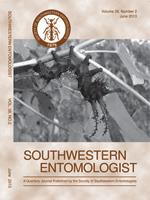The potato psyllid, Bactericera cockerelli (Sulc) (Hemiptera: Triozidae), is a pest of potato, Solanum tuberosum L., and other solanaceous crops in North and Central America. This insect transmits Candidatus Liberibacter solanacearum, the putative causal agent of zebra chip disease of potato. Recent studies identified three genetically distinct haplotypes of B. cockerelli in the United States, correlating to geographical regions: Central, Northwestern, and Western. Although biological differences among the haplotypes, including how effective they transmit the bacterium and their dispersal and overwintering capabilities, are currently being determined, identification of regional psyllid haplotypes is essential to effectively manage diseases caused by the pathogens they transmit to plants. Here, the same haplotyping tool used previously in the United States, high-resolution melting analysis targeted to the B. cockerelli mitochondrial cytochrome c oxidase I gene, was used to identify the psyllid populations in Mexico and Central America. Potato psyllids from Mexico, El Salvador, Honduras, and Nicaragua, were identified as belonging to the Central haplotype.
How to translate text using browser tools
1 June 2013
Haplotyping the Potato Psyllid, Bactericera cockerelli, in Mexico and Central America
K. D. Swisher,
A. P. Arp,
B. R. Bextine,
E. Y. Aguilar Álvarez,
J. M. Crosslin,
J. E. Munyaneza
ACCESS THE FULL ARTICLE

Southwestern Entomologist
Vol. 38 • No. 2
June 2013
Vol. 38 • No. 2
June 2013




